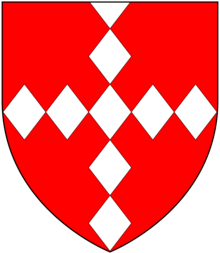John Stawell

Sir John Stawell or Stowell (29 August 1600 – 21 February 1662) of Cothelstone in Somerset, was an English Member of Parliament and Royalist governor of Taunton during the English Civil War.
The oldest surviving son of Sir John Stawell of Cothelstone and Elizabeth Touchet, daughter of the Earl of Castlehaven[1], Stawell was educated at Queen's College, Oxford. In 1625, he entered Parliament as member for Somerset, and was knighted (KB) at the coronation of Charles I early the following year. He was High Sheriff of Somerset in 1628, and was elected once more to represent the county in the Long Parliament of 1640. On the outbreak of the Civil War he declared for the King and was consequently disabled from sitting in Parliament in August 1642.
Sir John raised five regiments at his own expense for the Royal army, serving under Hertford in his campaign through the West Country, and after the capture of Taunton, he was the appointed its governor. When he was captured on the surrender of Exeter in 1646, he refused to take the covenant or to swear not to bear arms against Parliament in future, and was committed for trial on charges of high treason. He was imprisoned in the Tower of London and after many delays finally brought to trial in December 1650, but the High Court refused to sentence him and referred his case back to Parliament. His case was much discussed in Parliament but never settled, and he remained imprisoned for the entire Commonwealth period. (Clarendon in his History of the Rebellion recorded that Stawell was "in the first form of those who had made themselves obnoxious to parliament." His estates were seized and sold to meet claims of damages against him, but the proceedings were entirely arbitrary and probably illegal even under the new regime's own laws.) Released at the Restoration, his estates were restored and he was once more elected MP for Somerset in 1661, but died early the following year.
His son, Ralph (c. 1640–1689), was raised to the peerage as Baron Stawell in 1683, partly in recognition of Sir John's service to the Crown.
References
- Dictionary of National Biography
- "Stawell, John". The History of Parliament. The History of Parliament Trust. Retrieved 24 September 2012.
- D Brunton & D H Pennington, Members of the Long Parliament (London: George Allen & Unwin, 1954)
- Burke's Extinct Peerage (London: Henry Colburn & Richard Bentley, 1831)
| Parliament of England | ||
|---|---|---|
| Preceded by Sir Robert Phelips John Simms |
Member of Parliament for Somerset 1625 With: Sir Robert Phelips |
Succeeded by Sir Henry Berkeley Sir John Horner |
| Preceded by Sir Ralph Hopton Thomas Smith |
Member of Parliament for Somerset 1640–1642 With: Sir John Poulett |
Succeeded by George Horner John Harrington |
| Preceded by George Horner Hugh Smith |
Member of Parliament for Somerset 1661–1662 With: Edward Phelips |
Succeeded by John Poulett Edward Phelips |
| Preceded by John Clark Symes |
Sheriff of Somerset 1628 |
Succeeded by ? |
- ↑ "Stawell, Sir John (1599/1600–1662), royalist army officer | Oxford Dictionary of National Biography". Oxford Dictionary of National Biography. Oxford University Press. doi:10.1093/ref:odnb/9780198614128.001.0001/odnb-9780198614128-e-26331. Retrieved 18 March 2018.